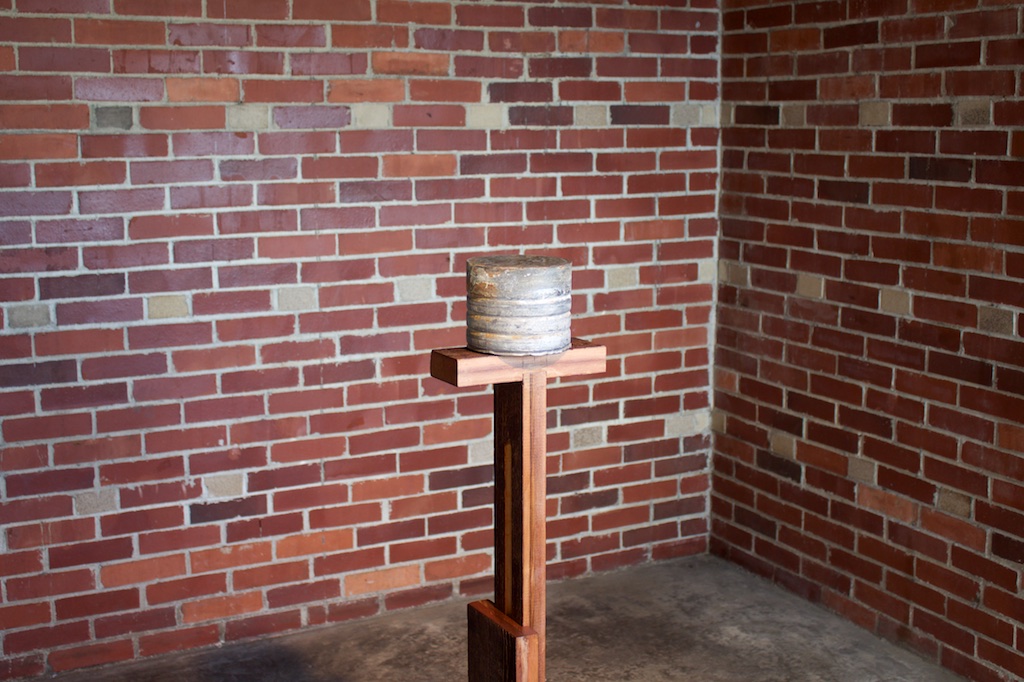Michael Stickrod
Deep Welds
August 1st, 2015 — August 29th, 2015
I.
A garage.
An excavation.
A pillar. A piece.
A totem. A taboo.
An anthropologist.
An inventor. An ingot.
An artwork. A column.
A warrior. A grave. A dump.
A native. An outsider. A symbol.
An answer. An individual. A twin.
A lizard. A ghost. A hermaphrodite.
A god. An artifact. A father. A secret.
II.
In 1946, French anthropologist Marcel Griaule spent thirty-three days receiving the oral history of the Malian Dogon from the wiseman Ogotemmêli. He had already lived among the Dogon for 15 years, but only then did he learn the history, lore, and myths of the people. Ogotemmêli decoded the secret symbolism of their elongated, abstract hidden sculptures.
III.
At the time of his own father’s death, Michael Stickrod was employed cataloging the estate of a recently deceased collector of African art. He spent his days sifting through the exotic and inscrutable objects at the behest of the heirs who needed to dismantle collection. Artworks were alongside totems, burial remains, and cultural artifacts. Stickrod was faced with a similarly mysterious archive as he cleared his own father’s garage, where, for decades, his father maintained a prolific and secretive art practice. Stickrod’s childhood home and garage became an archeological dig, an anthropological study, and an effort of art historical interpretation. Under the spell of the Dogon art he handled during the work week, Stickrod saw his father’s efforts in a new context. They were not just the obscure productions of a shuddered art practice, outside of contemporary conventions, but spoke to a larger story of a generation, a culture, and a particular place.
IV.
The togu na is a basic element in the Dogon village, not just a physical building but as an associated reference point to the whole village. The togu na is a meeting place, a place for teaching and working, for rest and conversation. The considerable modifications in the type of togu na as well as in the close relationship of the building with the outside, correspond largely to the three areas of the Dogon land: the highland area, the rocky belt, and the plain. Only the roof remains unchangeable as far as its material is concerned and the way it is built which suggests a ritual involving the whole community.1
V.
My mother passed away in 2008. She was my Togu Na pillar. She recorded everything she could on audiotape and later videotape– which inspired me to do the same. My mother believed in psychic energy and felt that an electric force surrounded objects. Individuals attach bits of their spirits to those objects.
VI.
In shielded metal arc welding, an electric current is used to strike an arc between the material and a consumable electrode rod or stick. This process is also called stick rod welding.
VII.
Many Dogon pillars have carvings of women’s breasts. A Dogon proverb says “The breast is second only to God.”
VIII.
A ghost’s half-life is long, perhaps even longer than the decayed uranium I recently found stored in several lead filled coffee cans in the garage. My father would melt lead collected from wheel weights and pour them into coffee cans to cast ingots. The last time I was working in my father’s garage, I noticed compact discs hanging from strings below the skeletal structure of a sundeck– this was my mother’s favorite place in the backyard. The mirrored finish on the discs used ward off birds, but mainly they reflected her paintings on the wall into space, like the bullroarer: an ancient ritual music instrument, a Dogon star caller, the voice of an ancestor from whom all Dogon descend.
About the Artist
Michael Stickrod is a sculptor and video artist living in New York City. He holds a BFA from The Ohio State University and an MFA from Yale University. He has exhibited his work in New York, Los Angeles, Chicago, Marseilles, Oslo, Copenhagen, Zurich, Brussels, Milan and Berlin. In 2008 he was awarded an Altoids Award and participated in an exhibition at the New Museum in New York. Recent solo shows include Karl-Kraft at Helper, Brooklyn and garden of the gods at 4 Boxes in Skive, Denmark.
-
Spini T. and S., 1977: Togu Na. The African Dogon House of Men, House of Words. Rizzoli. ↩

